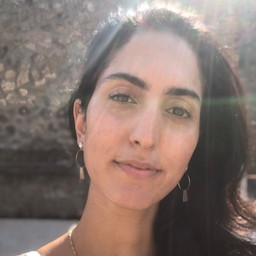
In April 2020, subshell celebrated its 21st anniversary. Of course, a lot has happened since the founding of the company in 1999, so our student intern Mariana and I (Hevi) interviewed subshell's two founders and CEOs, Jan and Tom. We also spoke with colleagues who have been there from the beginning, including Nils (member of the Management Team), Sören (member of the Management Team and head of Project Management), Julia (House Keeping), Feri (experienced developer) and Andreas N. (experienced tester).

Jan: Tom and I worked together in a multimedia agency in 1999. Tom was already employed there; I had a student job.
Since there were hardly any editorial or other software systems, websites for companies like Mercedes Benz, Karstadt, Lufthansa, Bank 24 and others were written by hand. As a subsidiary of an advertising agency, a lot of emphasis was placed on the visual aspects of a website. It seemed to be less important that everything below the surface is stable and technically well thought out.
At some point, that wasn't enough for Tom and me, so we thought we'd try something on our own.
Tom: I had already been freelancing for a year before starting the company, and that felt good at first. At some point, however, I felt that I could tackle more exciting projects and make more of a difference if I started a company and worked with several people. That was one of my main motivations.
We were both working for the same company and Jan quit his job after I did. It was simply the right time. The chemistry with Jan was right.
We knew that we could work well together and that we complemented each other from a technical point of view, because I am more technically oriented and Jan is more interested in aspects of company management.
Nils: I think it was 20 years ago in 2000. I knew Jan and Tom, who founded the company, from a job they had together in a large multimedia agency. When they asked me if I wanted to work at subshell, I immediately wanted to.
In the beginning, we did a lot of work for other companies at subshell and I wrote a lot of concepts, which was very interesting.
Feri: I got in touch with Jan and Tom during my student job while studying business informatics. Tom and Jan then founded their own company and at some point called me to come over. When I asked when I should start, they said “Right away!”. I think I started at subshell in 1999 and spent almost six to eight months on-site developing for customers. In the beginning, subshell didn't have a real office.
Julia: My first day at subshell was April 30, 2000, and I was very excited that two guys had set up such a company. At that time there were eight of us in the company. I felt very comfortable right away.
Sören: I think I started on September 01, 2000. The background was that I knew Nils from my computer science studies. He asked me if I would like to drop by subshell, because they were looking for developers.
At that time, I was still working at the university and wanted to try something different. The interview went something like this, "Can you do some programming?", "Yes, at the university, we use Java", "Ok, when can you start?". That's all you had to do. Today it's a little different, if you want to start at subshell as a student.
Andreas N.: I was looking for a job and a mutual acquaintance at university told me to give Jan a call. He then told me to come by. That's how I started here. At that time, I was the first permanent employee. Feri and Nils were already at subshell as students.
Nils: It's an IT term that fits well with a software company.
By the way, the oil company Shell objected to the trademark application. But we were then allowed to continue using the name "subshell" after experts confirmed that our logo was not a sea shell. And we are never allowed to use red and yellow in the logo.
Jan: We started at subshell with the support of various multimedia agencies, which were not yet technically up to date at that time.
Later, in cooperation with NDR and tagesschau, we started to implement the first major editorial system for them, which at that time was still based on an American software.
This software was very popular and was also in use by large companies. However, only a few people knew how to use the software or were able to act as consultants for the American software company. At the end of my work in the media agency, however, I got to know this software.
After a few years of working with NDR and tagesschau, it turned out that the software wasn't really that good, so we thought about developing a CMS program ourselves. This is how we started to develop Sophora.
Tom: It's been over 20 years with many ups and downs.
We started with two people and it was always clear to us that we didn't want to have such rapid growth, where we get a lot of money from outside investors and hire a team of 20 people right away. Instead, the plan was always to grow organically.
Of course, in the beginning, there were exhausting phases, because projects were too big for our small team, things were delayed, and didn't work out the way we had imagined, customers didn't pay as we had hoped. This has improved over the years.
The main point of development has been the realization that if you understand your customer base and work together for the long term, the extreme ups and downs don't happen as often and you develop some confidence that the everything will work for the best in the long run. It has been a continuous evolution.
Nils: First of all, subshell has grown and has also evolved a bit from a company implementing projects for others to a developer of its own products. This has also changed the way we work, because, of course, more people need to work together to achieve results. This necessitated other forms of organization within the company.
And developing our own product has also changed the marketing focus of the company.
Feri: Compared to previous years, the company has developed rapidly during the last 5-6 years. subshell was a small company with a family atmosphere and an open office; everyone knew each other. If one person was on the phone, everyone listened in.
With the move to HafenCity, the atmosphere and structure changed very slowly. There used to be a Team Jan and a Team Tom. Now we have teams by clients and projects that are much more extensive.
Sören: Because of the current size of the company, all workflows have changed. In the past, these were much less formalized - that also allowed for a lot of flexibility in our day to day. You simply did what you had to do, spoke to Tom if you had any questions, and programmed very independently for yourself.
We didn't do the daily stand-ups back then. You could experiment and learn a lot.
Andreas N.: The people have changed, the customer base and the product range have stabilized. At that time, we had a few advertising orders here and there for various customers, some of them small.
At one time, around the turn of the millennium, the industry had hopes of being a gold mine. There were young people, essentially from the advertising field, who thought that they were really great. That was the mood during the time when we had our first office. People thought they were going to get filthy rich, without much effort. That didn't last with a lot of them. The bubble burst.
Nils: We had an internal competition and Sophora won out. One of our humanistically educated customers then came up with the appropriate explanation. "Sophora is reminiscent of sophia (Greek: wisdom) and hora (Latin: hour, time) and refers to the use of the software in an environment with high demands on journalistic quality and topicality of content."
Jan: A very big highlight for me was that we were allowed to build a website, the tagesschau CMS in 2006/2007. That was impressive.
Tom: The biggest highlight was when we developed our own CMS system. After working as a service provider and doing a few small developments during our first few years, we suddenly took a completely different step with Sophora.
We realized that we were now developing something bigger and that this also gave us the opportunity to use Sophora as a product with other customers. That was a pretty crucial point in subshell's history.
Nils: For me, a highlight was that we were able to work with the Bundeszentrale für politische Bildung (Germany‘s Federal Agency for Civic Education). That was very interesting. Another highlight is that the ZDF-Mediathek is now running on Sophora. And of course, when tagesschau decided to let us develop the Sophora CMS.
Feri: I was impressed that we were able to hang on for so long and that we pursued the right strategy. Many companies go under very quickly.
Sören: I always liked the summer parties on the Elbe beach. We would sit there until morning, even with people who don't even come to the summer parties anymore.
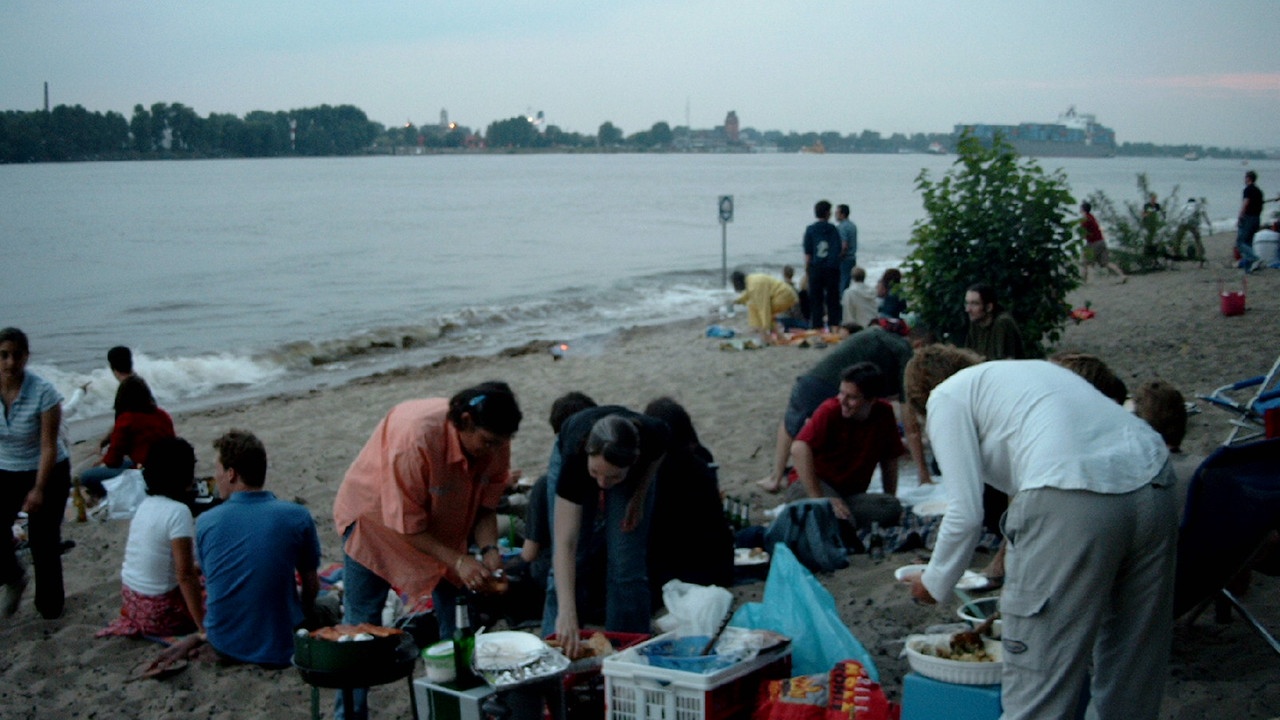
I also enjoyed the initial phase of Sophora development and the possibility to develop a product from scratch.
Another personal highlight for men was agile software development as part of my diploma thesis. The subject was totally new at university and this way of working was only used by some companies in the USA. When I presented to NDR what I planned to do with agile software development at their company, they just smiled at me at first.
We then started our very first agile project, TableStar, as our first project with the NDR. TableStar ran for a decade. I was proud of that.
Andreas N.: Not a highlight, but one of the craziest and most enjoyable memories from Weidenallee was one of the first big company parties in our first offices in Sternschanze with what felt like 200 people.
The management invited a band with live music and huge amplifiers. This was at a time when all people in the business were happy and thought they would stay young and beautiful and get rich. The music resonated as far away as the water tower in Schanzenpark.
Nils: Jan and I had the opportunity to do a job in Egypt in 2010 as part of a consortium. That was pretty crazy because we also had to present at the palace of the president at the time. That was before the Arab Spring and luckily, the project didn't happen. But the trip to Cairo and the stay there were quite adventurous and interesting.
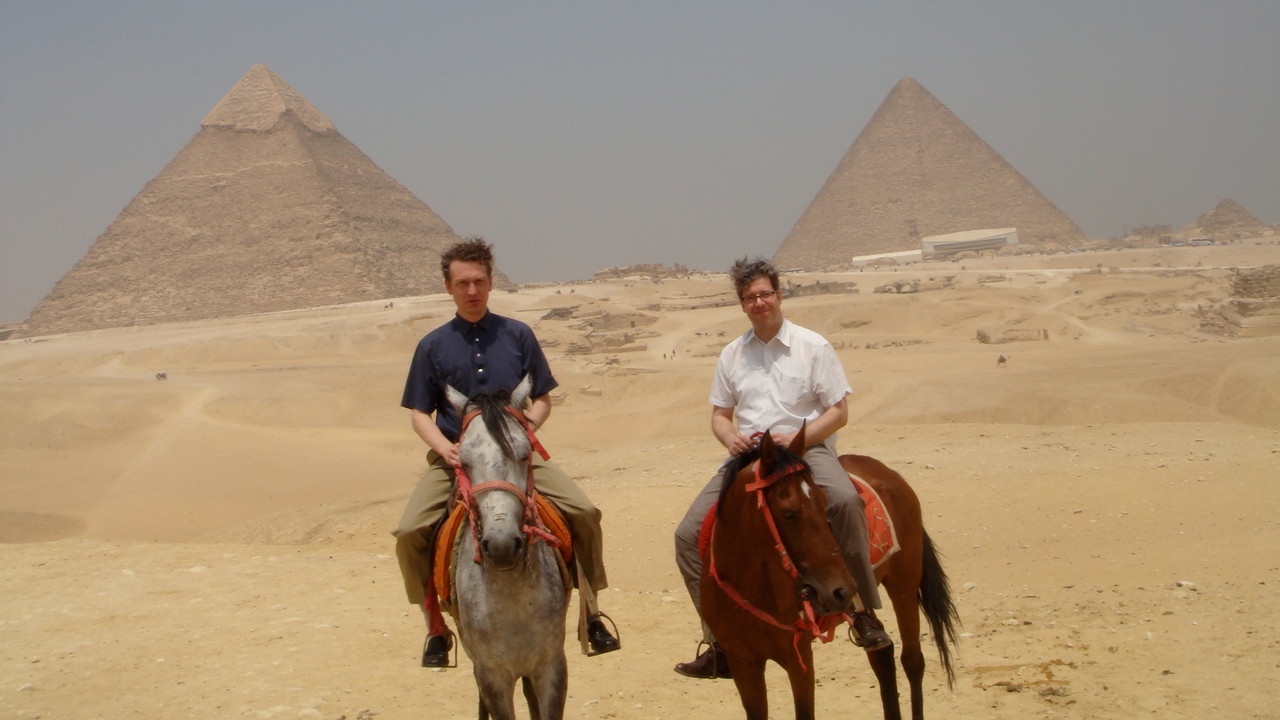
Feri: There were many high points at subshell, but what I miss most is the "old school" style of developing. Development used to take place in an open-plan office, which made the process unique. If there was a problem, we could call out, "Hey! Come here and take a look!".
Andreas: There was a funny moment that I look back on fondly, when we moved offices from Weidenallee to Margaretenstraße with the help of shopping carts. Nils had previously thrown away all sorts of things and said, "Oh, we don't need that!". That fits his innovative nature and his role in the company.
Julia: Looking back, I'm happy to see how the company has grown and how many people now work here - and I look back on two bosses who were super and have remained so to this day.
Tom: We had continuous development without a lot of drama, without big leaps and without huge upheavals; that is one of the main characteristics of subshell.
Nils: The company has grown slowly and as a result, has become more professional in some parts. But it's all still very personal; we know each other and work well together.
Feri: We have become more professional. Every area is staffed with the right person in the right position. In the past, more flexibility was required of us. Today, you know who to go to when you need something.
The quality of the software is also continuously improving because the more people we have and the better the workflows are, the more time we can invest into assuring quality.
Sören: I like the way we have grown. In other companies, it's sometimes the case that someone gives a company 3 million euros and it's spent without consequences. At some point, the investors pull their money out again.
Personally, I prefer to do things that are sustainable. We at subshell have grown with the money we had. I also like the continuity, that people like Torsten, Steffen or I started here as students and are still here today.
In other companies, the staff changes in a yearly cycle. Accordingly, I think it's a shame when people who have been with us for a long time leave.
Andreas N.: At the 10-year anniversary celebration, Tom once said something like, "We've grown up."
Jan: A major challenge is to make the right decisions for the future of the company in a wide variety of areas, based on the information available. These are in particular - but not only - personnel, strategic and technical decisions.
Tom: I see my role as deciding which technological steps to take. Specifically, we are now discussing the cloud. There are new technological developments to be considered, whether we want to go in one direction or the other, and whether to ignore or embrace certain technologies.
In doing so, decisions must be made that will keep us moving in the right direction for years to come.
Feri: A lot is done to make us feel at home and familiar - for example, through regular events, staff meetings, but there is also always an open door when we need to talk. As a family man, I don't have any problems balancing work and private life because we can work flexibly. It's easy to manage work as a family man or parent.
I would say that employee involvement is the strongest success factor at subshell. We have a strong culture of exchange. Although we often have disagreements within projects, productive discussions and consensus emerge in the end. Management considers everyone's opinions fairly.
Staff are treated with respect and we are trusted, for example by being given responsibility for tasks very early on, new ideas are welcome, and I feel that a say in decisions is possible for everyone.
Another important point for me is subshell's idea as a socially responsible company. We participated in a refugee program 3 or 4 years ago and mentored a young intern, and we planned Girls Day, which unfortunately had to be cancelled due to COVID-19.
So it's not just about maximizing profits, but trying to give something back.
Sören: What I appreciate most about the corporate culture at subshell is the familial atmosphere - that's what subshell is all about for me. As a result, people can trust and rely on each other, and colleagues treat each other with respect.
I also see an important reason for the family-like corporate culture in the fact that very many colleagues have been working at subshell for a long time - this continuity is a valuable asset that we should continue to cultivate carefully.
Jan: The corporate culture is also shaped by the fact that employees can shape their own environment and are involved in important decisions. Vacation planning, for example, is organized autonomously by the individual teams. When it comes to new hires, the teams have a say. They have their own budget to work with.
The way we organize ourselves via SCRUM also plays a role, because that naturally has a strong effect on our daily life at subshell. We worked on paper for a very long time and wrote tasks on index cards. We then put them on the table. Those with the highest priority were then on the right and the less important ones were on the far left. Then we hung the cards on a glass wall.
In 2006, SCRUM slowly took off. At that time, the topics were still distributed classically on demand. Up to a certain size, this still works, but when there are more people, it becomes more complicated. Accordingly, we have also further developed SCRUM for our needs.
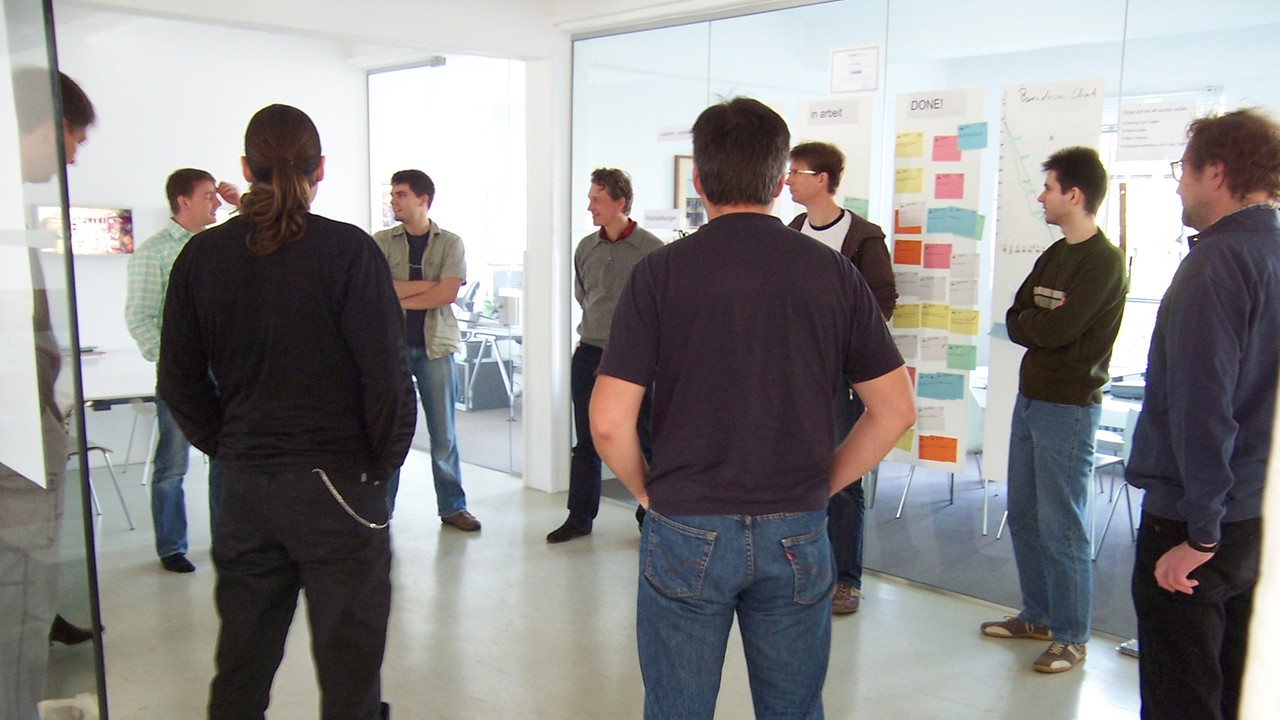
Tom: The continuous development process that we have already been pushing for the last 10 to 15 years will continue. That means we will continue to work intensively with ARD, ZDF and other existing customers.
From my perspective, I think it's interesting to then continue to tackle technologically exciting topics. That means we will certainly be somewhere else technologically in 10 years than we are today.
Nils: Hopefully still in HafenCity; I'd like that because I like working here.
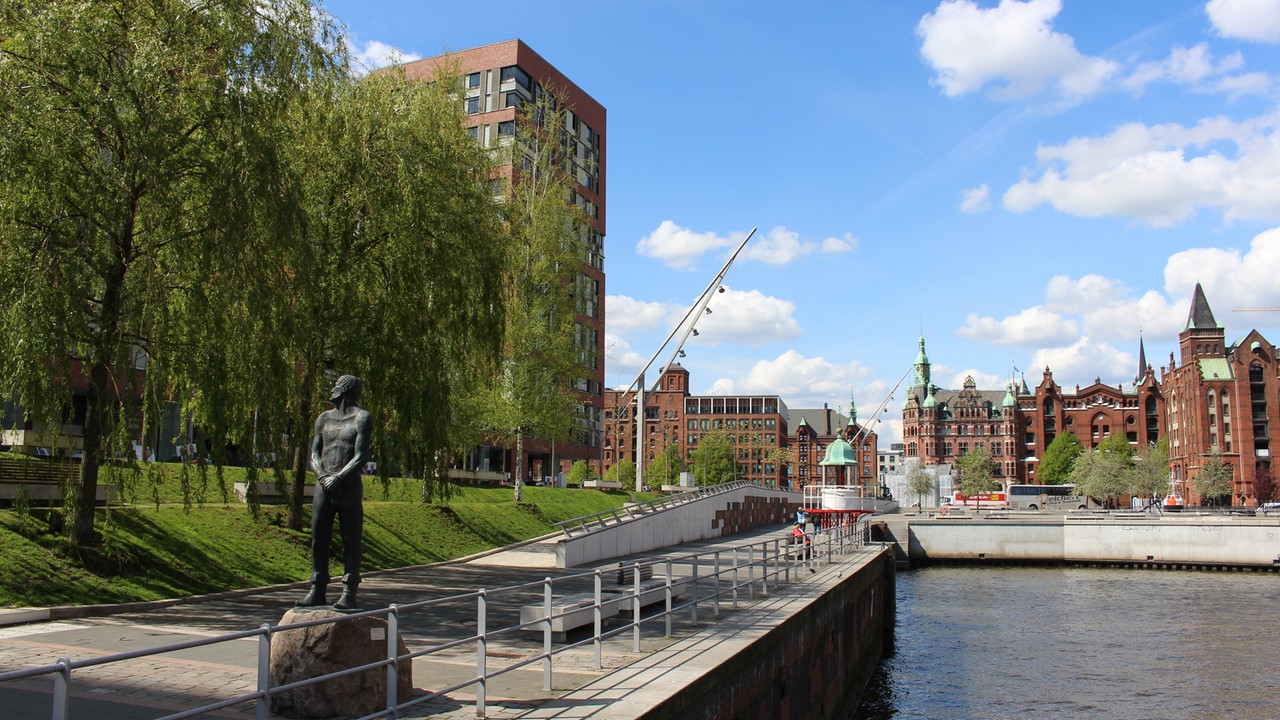
Technically, a lot will have changed. We will certainly be on the move in the cloud. I also hope that we'll add a few more international customers.
Julia: Since I see how motivated the employees are, I assume that a lot will happen in the next 10 years.
Sören: Where do I see the company in 10 years? Not much different than now. A bit bigger, but not much bigger. I hope that the familial atmosphere remains.
I find it pleasant to work with our current customers because they aren‘t our customers for profit only and I hope it stays that way.
Feri: I can't say too much about that, but I would think it would be great if we had more women developers. After all, programming is not just a man's job. subshell is already trying to participate in programs like Girls Day. That's the right way to go.
My daughter is very interested in what I am doing and always asks, "Dad, what are you doing?" The stereotype that developers are mostly men, wear glasses, and only stare at their computer screen should be changed.
